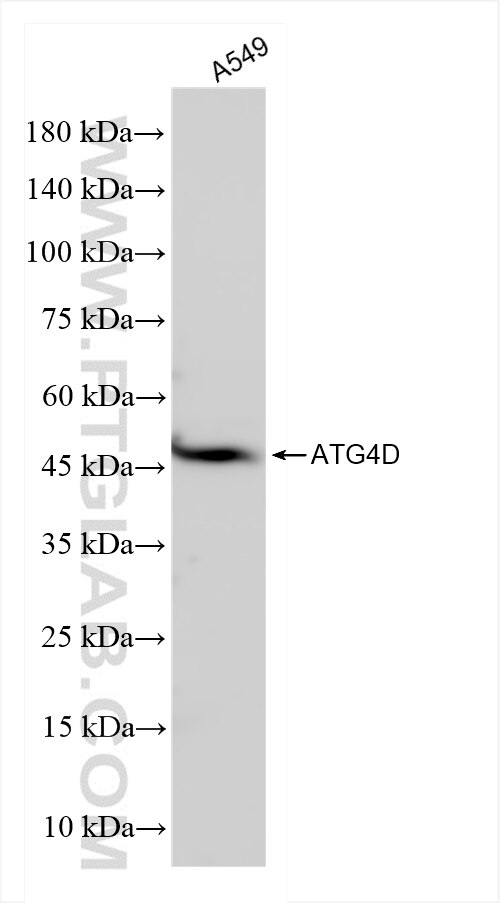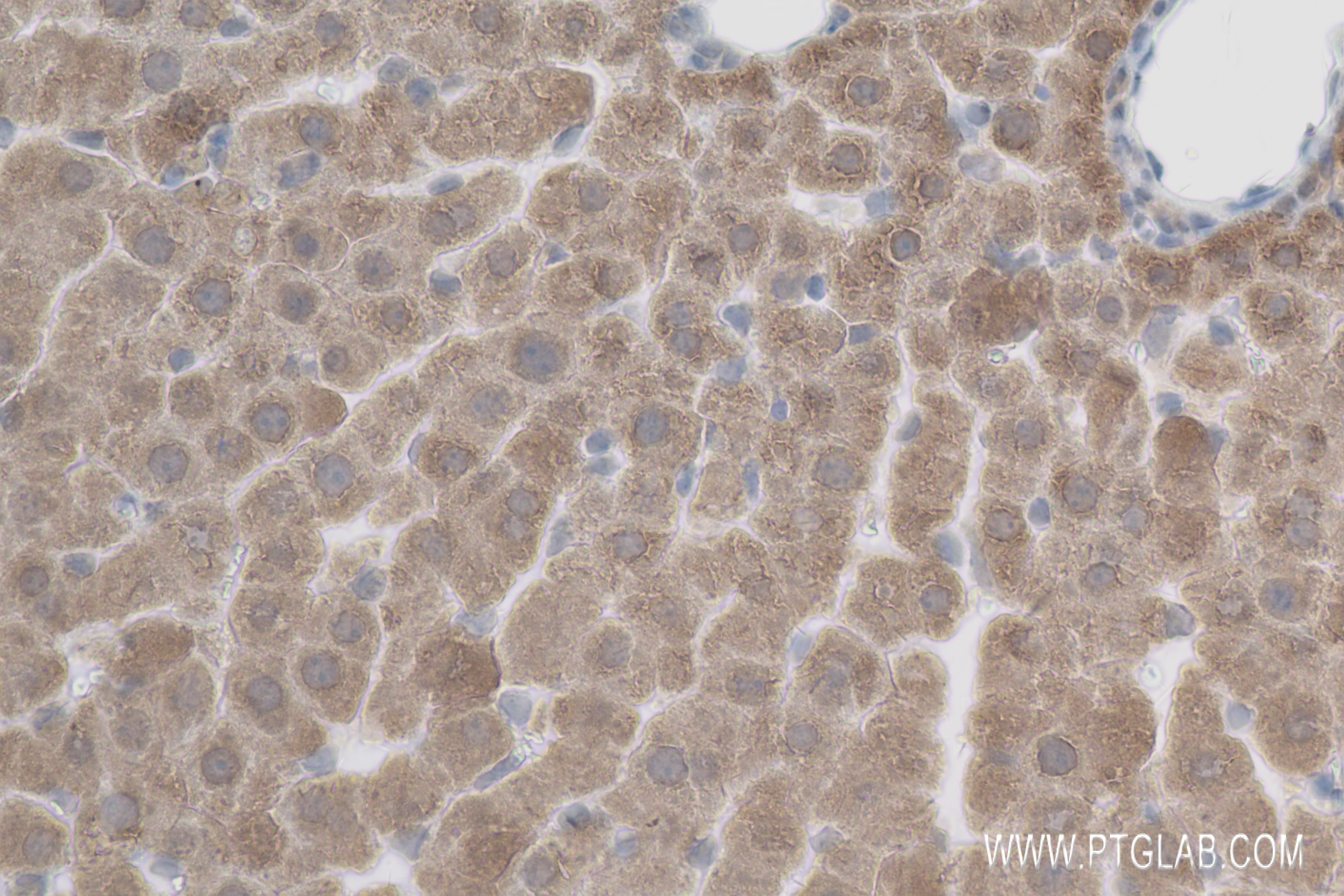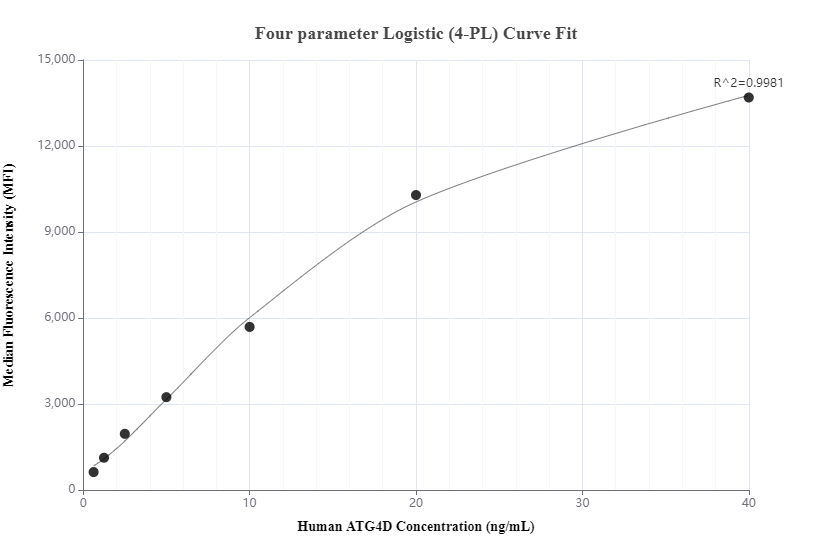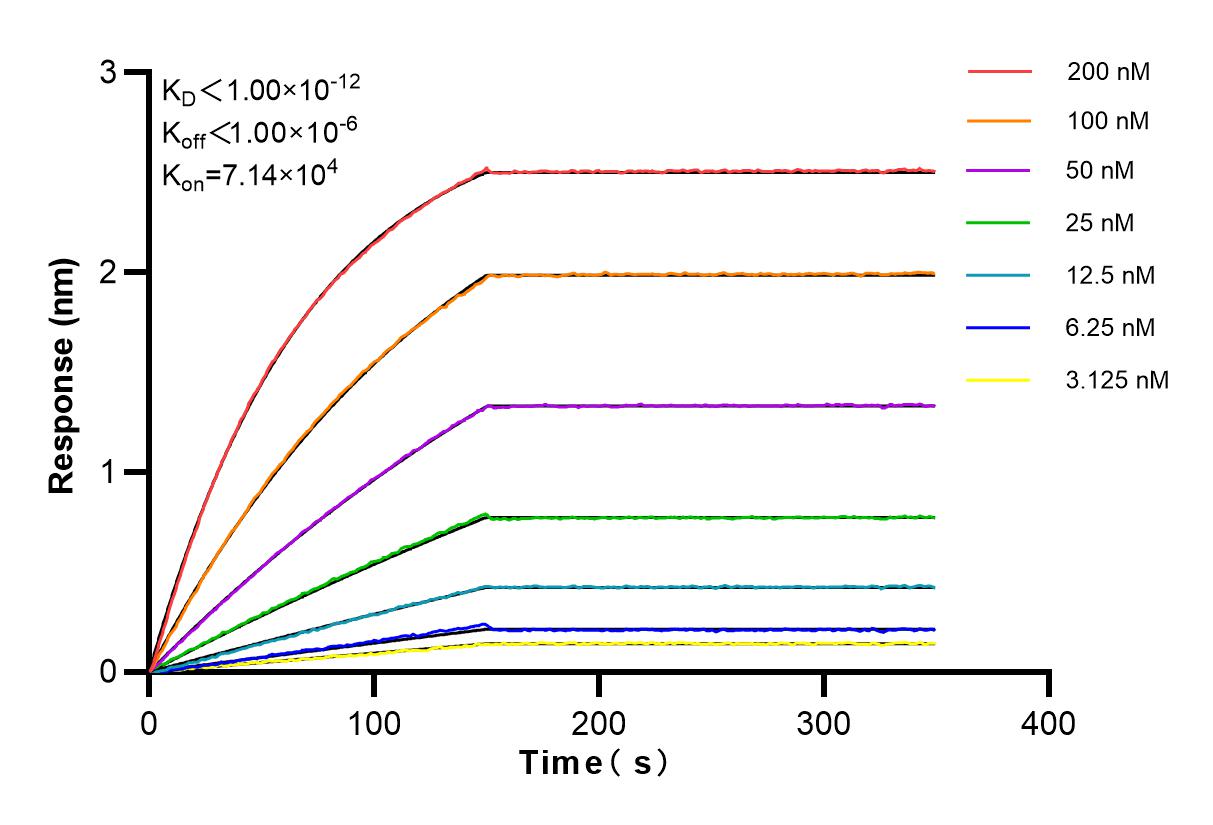Product Information
83951-4-PBS targets ATG4D as part of a matched antibody pair:
MP00902-3: 83951-1-PBS capture and 83951-4-PBS detection (validated in Cytometric bead array)
Unconjugated rabbit recombinant monoclonal antibody in PBS only (BSA and azide free) storage buffer at a concentration of 1 mg/mL, ready for conjugation. Created using Proteintech’s proprietary in-house recombinant technology. Recombinant production enables unrivalled batch-to-batch consistency, easy scale-up, and future security of supply.
This conjugation ready format makes antibodies ideal for use in many applications including: ELISAs, multiplex assays requiring matched pairs, mass cytometry, and multiplex imaging applications.Antibody use should be optimized by the end user for each application and assay.
| Tested Reactivity | human, rat |
| Host / Isotype | Rabbit / IgG |
| Class | Recombinant |
| Type | Antibody |
| Immunogen | ATG4D fusion protein Ag10177 Predict reactive species |
| Full Name | ATG4 autophagy related 4 homolog D (S. cerevisiae) |
| Calculated Molecular Weight | 474 aa, 53 kDa |
| Observed Molecular Weight | 53 kDa |
| GenBank Accession Number | BC068992 |
| Gene Symbol | ATG4D |
| Gene ID (NCBI) | 84971 |
| Conjugate | Unconjugated |
| Form | Liquid |
| Purification Method | Protein A purification |
| UNIPROT ID | Q86TL0 |
| Storage Buffer | PBS only , pH 7.3 |
| Storage Conditions | Store at -80°C. |
Background Information
ATG4D, a member of autophagy-related protein 4 (ATG4) family, plays an interplay role between autophagy and apoptosis in cancers. There are two Atg4 family members-Atg4C and Atg4D-contain cryptic mitochondrial targeting sequences immediately downstream of their canonical(DEVD) caspase cleavage sites. Consequently, caspase-cleaved Atg4D (DN63 Atg4D) localizes to the mitochondrial matrix when expressed in mammalian cells, where it undergoes further processing to a ~42 kDa mitochondrial form.









